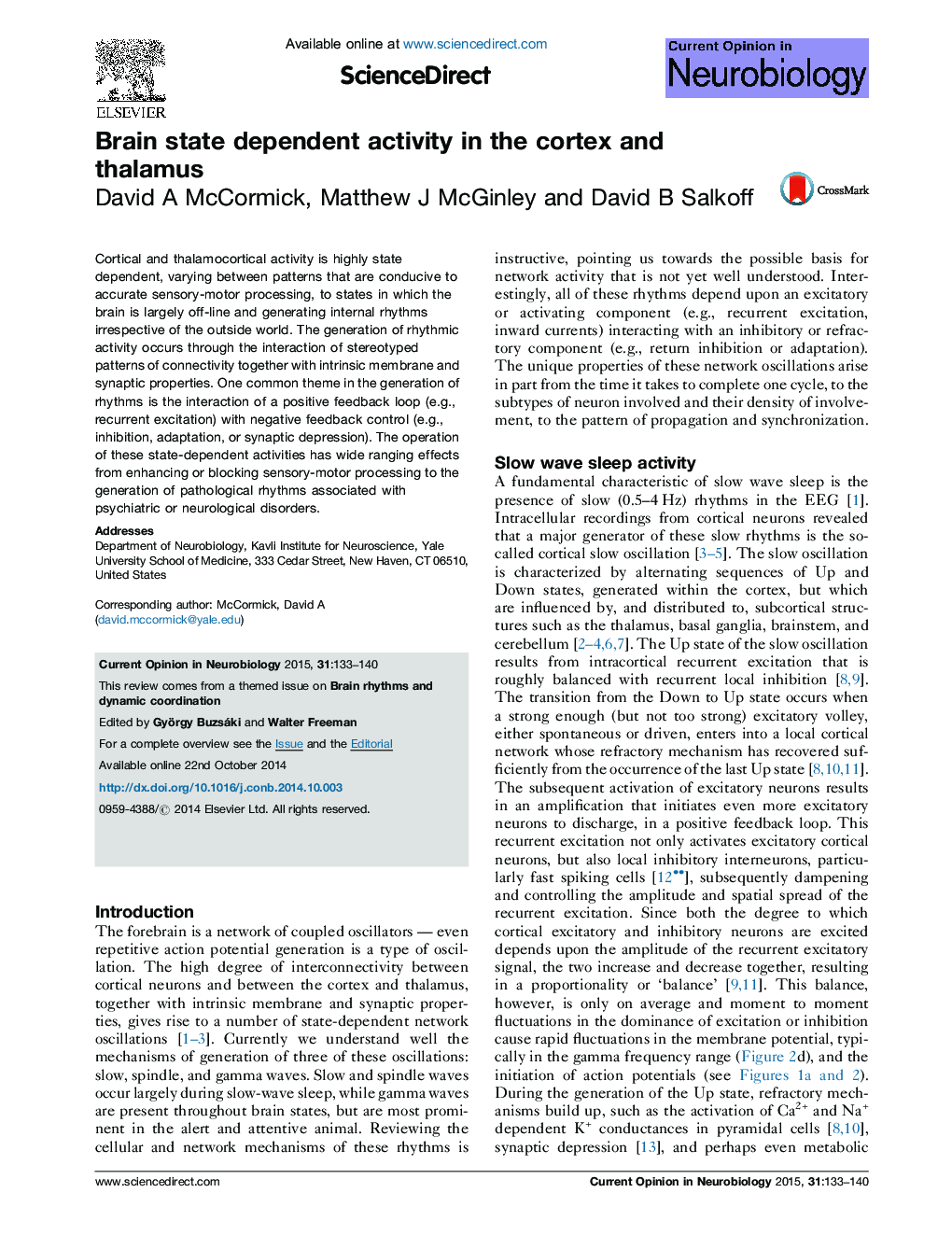| Article ID | Journal | Published Year | Pages | File Type |
|---|---|---|---|---|
| 6266224 | Current Opinion in Neurobiology | 2015 | 8 Pages |
â¢The state of thalamocortical activity strongly influences sensory processing.â¢The cellular and network mechanisms of three types of oscillation are presented.â¢Slow waves are abolished during waking and gamma waves are enhanced.â¢Rodents can exhibit slow waves during inattentiveness or drowsiness.â¢Rhythms interact to generate nested oscillations.
Cortical and thalamocortical activity is highly state dependent, varying between patterns that are conducive to accurate sensory-motor processing, to states in which the brain is largely off-line and generating internal rhythms irrespective of the outside world. The generation of rhythmic activity occurs through the interaction of stereotyped patterns of connectivity together with intrinsic membrane and synaptic properties. One common theme in the generation of rhythms is the interaction of a positive feedback loop (e.g., recurrent excitation) with negative feedback control (e.g., inhibition, adaptation, or synaptic depression). The operation of these state-dependent activities has wide ranging effects from enhancing or blocking sensory-motor processing to the generation of pathological rhythms associated with psychiatric or neurological disorders.
